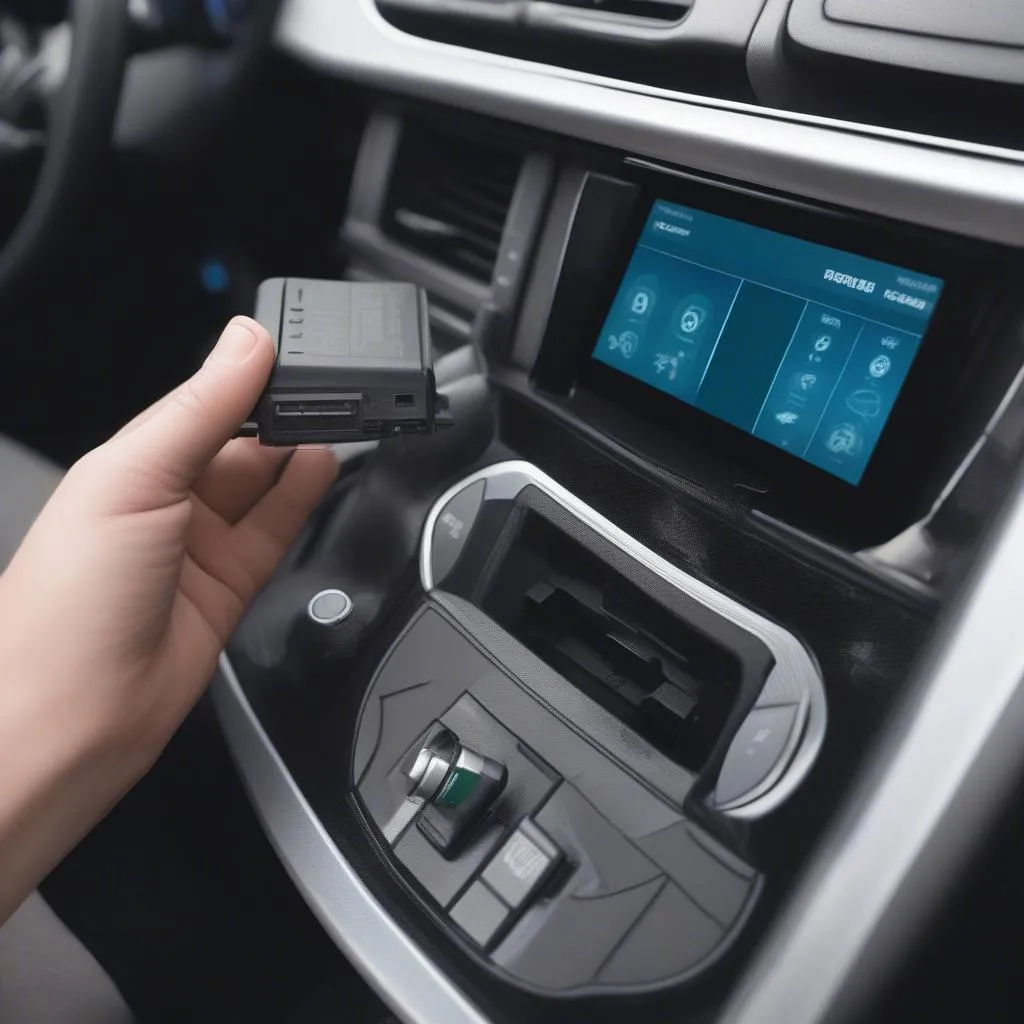Have you ever encountered a “Check Engine” light on your dashboard, leaving you wondering what’s wrong with your car? You’re not alone. Many car owners face this common issue, and understanding how to read and flash OBD2 codes can be a valuable skill. This guide will equip you with the knowledge to decipher those codes and potentially resolve minor car problems yourself.
What are OBD2 Codes and Why are they Important?
OBD2 codes are diagnostic codes stored in your car’s onboard computer, or “Electronic Control Unit” (ECU). They provide valuable information about the health of your car’s systems and any potential issues. When a malfunction occurs, the ECU logs the error and generates a code to identify the problem.
How to Flash OBD2 Codes: A Step-by-Step Guide
Flashing OBD2 codes involves using a diagnostic tool, also known as a “scanner” or “code reader,” to access and interpret the information stored in your car’s ECU. These tools come in different forms, ranging from basic handheld scanners to advanced software programs that can be used on a computer.
Step 1: Locate Your OBD2 Port
Most modern vehicles (manufactured after 1996 in the US) have a standardized OBD2 port located under the dashboard. This port is typically found near the steering column or on the driver’s side, below the center console.
 obd-port-location
obd-port-location
Step 2: Connect the Scanner
Once you’ve found the OBD2 port, plug the scanner into it. The scanner’s connector should match the shape of the port.
Step 3: Turn the Ignition Key to “On”
Do not start the engine. Turning the key to the “On” position allows the scanner to communicate with the ECU.
Step 4: Access the OBD2 Codes
Use the scanner’s interface to access the diagnostic codes stored in the ECU. Most scanners will display the codes in a numeric format, such as “P0300,” “B1234,” or “C1500.”
Step 5: Interpret the OBD2 Codes
The codes you see are more than just random numbers. Each code has a specific meaning that can be interpreted to understand the underlying issue.
Here’s how to break down the code:
- First Character: “P” for Powertrain, “B” for Body, “C” for Chassis, or “U” for Network.
- Second Character: “0” for Generic code, “1” for Manufacturer-specific code.
- Third and Fourth Characters: Identify the system or component affected.
- Fifth Character: Indicates the specific issue or malfunction.
Step 6: Use the OBD2 Codes to Troubleshoot
Once you’ve deciphered the codes, you can use them to troubleshoot potential problems. Many online resources, such as websites and mobile apps, offer free OBD2 code lookup tools. You can also consult a repair manual or a professional mechanic for more detailed information.
Frequently Asked Questions About Flashing OBD2 Codes
Q: What happens when I flash the OBD2 codes?
A: Flashing OBD2 codes simply means reading and interpreting the information stored in the ECU. It doesn’t change or modify the car’s settings.
Q: Can I flash OBD2 codes myself?
A: Yes, you can flash OBD2 codes yourself using a diagnostic tool. However, some advanced diagnostic procedures require specific knowledge and tools.
Q: What are some common OBD2 codes?
A: Some common OBD2 codes include:
- P0300: Multiple Cylinder Misfire
- P0171: System Too Lean
- P0420: Catalyst System Efficiency Below Threshold
- B1234: Airbag System Malfunction
Q: Do I need to clear the OBD2 codes after troubleshooting?
A: Clearing the OBD2 codes is typically not necessary unless you’ve addressed the underlying issue. Clearing the codes may cause the “Check Engine” light to go out temporarily but will not fix the problem.
Q: Can I flash OBD2 codes for any car?
A: While most vehicles manufactured after 1996 in the US have a standardized OBD2 port, some older cars or imported models may require specialized diagnostic tools.
Need Professional Assistance with OBD2 Codes?
If you’re struggling to understand or interpret OBD2 codes, or if you’re facing complex car issues, it’s best to consult a qualified mechanic. They can use advanced diagnostic equipment and provide expert advice.
For those seeking comprehensive solutions and expert guidance, our team of professional auto technicians at Tech Car USA are available 24/7 to assist with all your diagnostic needs. Contact us via Whatsapp: +84767531508 for personalized support.
Conclusion
Understanding how to flash OBD2 codes empowers you to gain valuable insights into your car’s health. By utilizing this information, you can potentially troubleshoot minor issues and ensure your vehicle runs smoothly. Remember, always prioritize safety and seek professional help when needed.
Let us know in the comments below if you have any further questions about OBD2 codes, or if you’d like to discuss other car-related topics. We’re here to help you navigate the world of automotive technology!